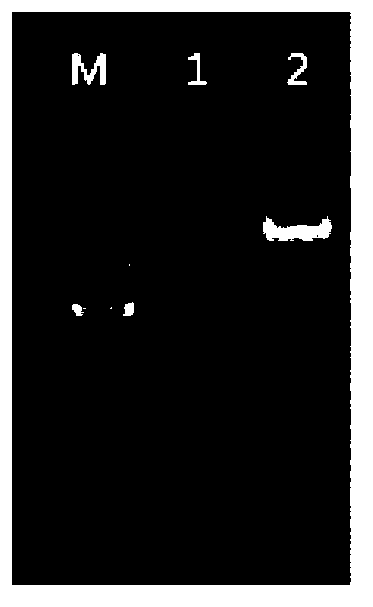Molecular marker for identifying wild state/mutation state of Chinese cabbage TNL-E gene and applications of marker
A Chinese cabbage and labeling technology, which is applied in the determination/inspection of microorganisms, DNA/RNA fragments, recombinant DNA technology, etc., can solve the problems of R gene cloning that has not yet been seen, so as to avoid the blindness of selection, simplify screening methods, and genetically rich background effects
- Summary
- Abstract
- Description
- Claims
- Application Information
AI Technical Summary
Method used
Image
Examples
Embodiment 1
[0026] Example 1. Cloning of TNL-E in two resistant / susceptible Chinese cabbage inbred lines 8407 and 06-247
[0027] 1.1 Chinese cabbage genomic DNA extraction
[0028] (1) Put the leaves of Chinese cabbage seedlings into a liquid nitrogen pre-cooled mortar, and grind them into powder in liquid nitrogen;
[0029] (2) After the liquid nitrogen evaporates to dryness, transfer it to a 2ml centrifuge tube immediately, add about 0.6ml of CTAB extract preheated to 65°C for every 100mg of material, after melting, vigorously shake and mix the sample, place it in a 65°C water bath for 40- 60 minutes to lyse the cells;
[0030] (3) After the lysis is complete, take out the sample and let it cool down to room temperature completely. Add an equal volume of chloroform (chloroform), gently invert to mix, and place at room temperature for 10 minutes;
[0031] (4) Centrifuge at 12000 rpm for 15 minutes at room temperature;
[0032] (5) Use a pipette to carefully suck out the upper aqueou...
Embodiment 2
[0053] Embodiment 2 Exploitation and Application of Overt ASM Markers
[0054] Since the primer combination TNL1F / TNL1R can amplify a 1367bp band in the disease-resistant material 8407, but no band can be amplified in the susceptible material 06-247, this pair of primers can be used to distinguish whether the TNL-E gene is complete Existing tags. Since the R gene is generally dominantly inherited, it can be detected when there is a wild-type gene in the genome; the mutant cannot be detected only in the homozygous state. The marker is 1367bp long, as shown in SEQ ID No.1, and the forward and reverse primer sequences are shown in SEQ ID No.3 and SEQ ID No.4. In order to verify the practicability of the marker, we used it to detect the backcross offspring of (8407×06-247×06-247. The specific implementation rules are as follows:
[0055] (1) The genomic DNA of each individual plant in the backcross population was extracted as described in 1.1 of Example 1.
[0056] (2) PCR ampl...
PUM
 Login to View More
Login to View More Abstract
Description
Claims
Application Information
 Login to View More
Login to View More - R&D
- Intellectual Property
- Life Sciences
- Materials
- Tech Scout
- Unparalleled Data Quality
- Higher Quality Content
- 60% Fewer Hallucinations
Browse by: Latest US Patents, China's latest patents, Technical Efficacy Thesaurus, Application Domain, Technology Topic, Popular Technical Reports.
© 2025 PatSnap. All rights reserved.Legal|Privacy policy|Modern Slavery Act Transparency Statement|Sitemap|About US| Contact US: help@patsnap.com



